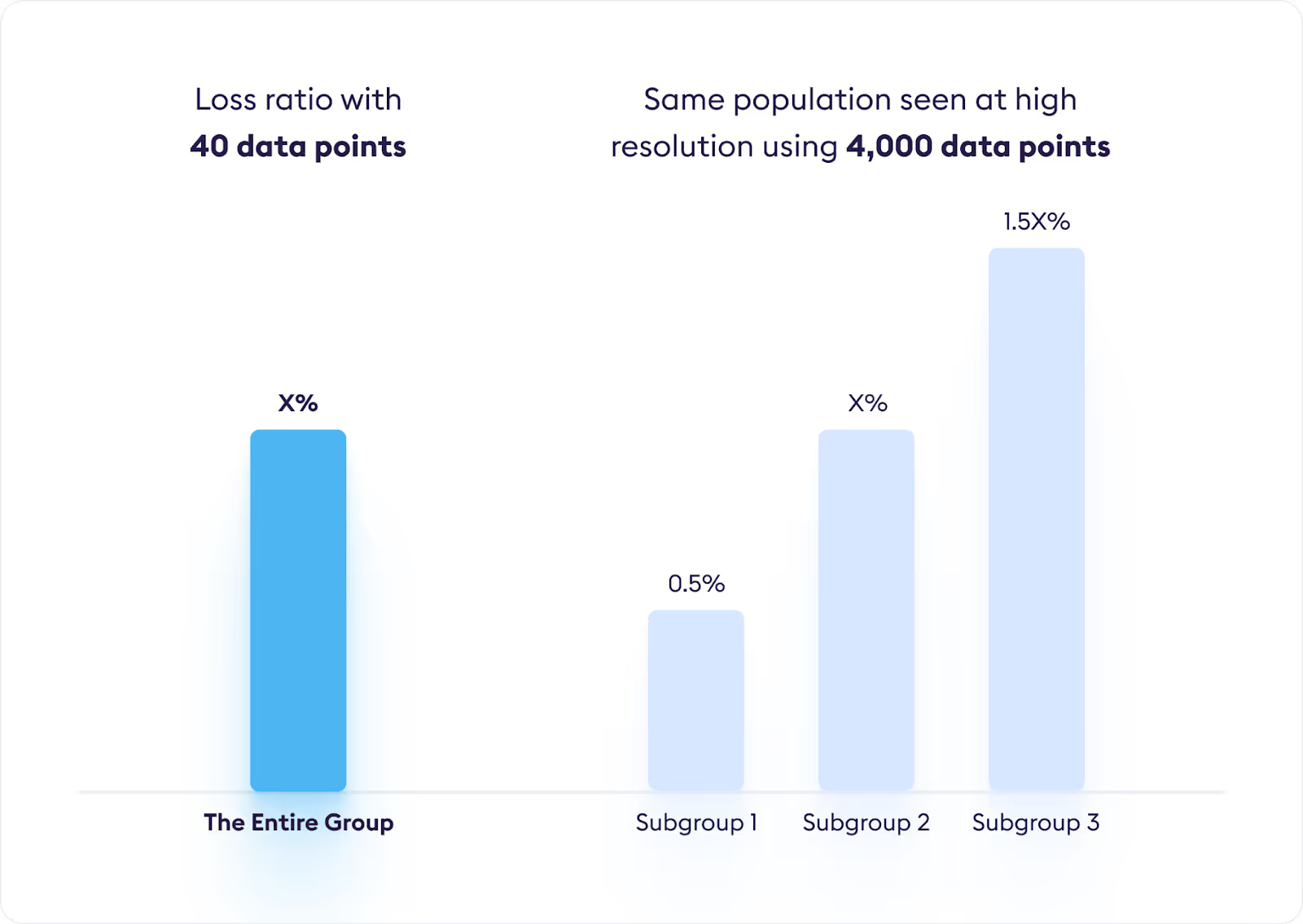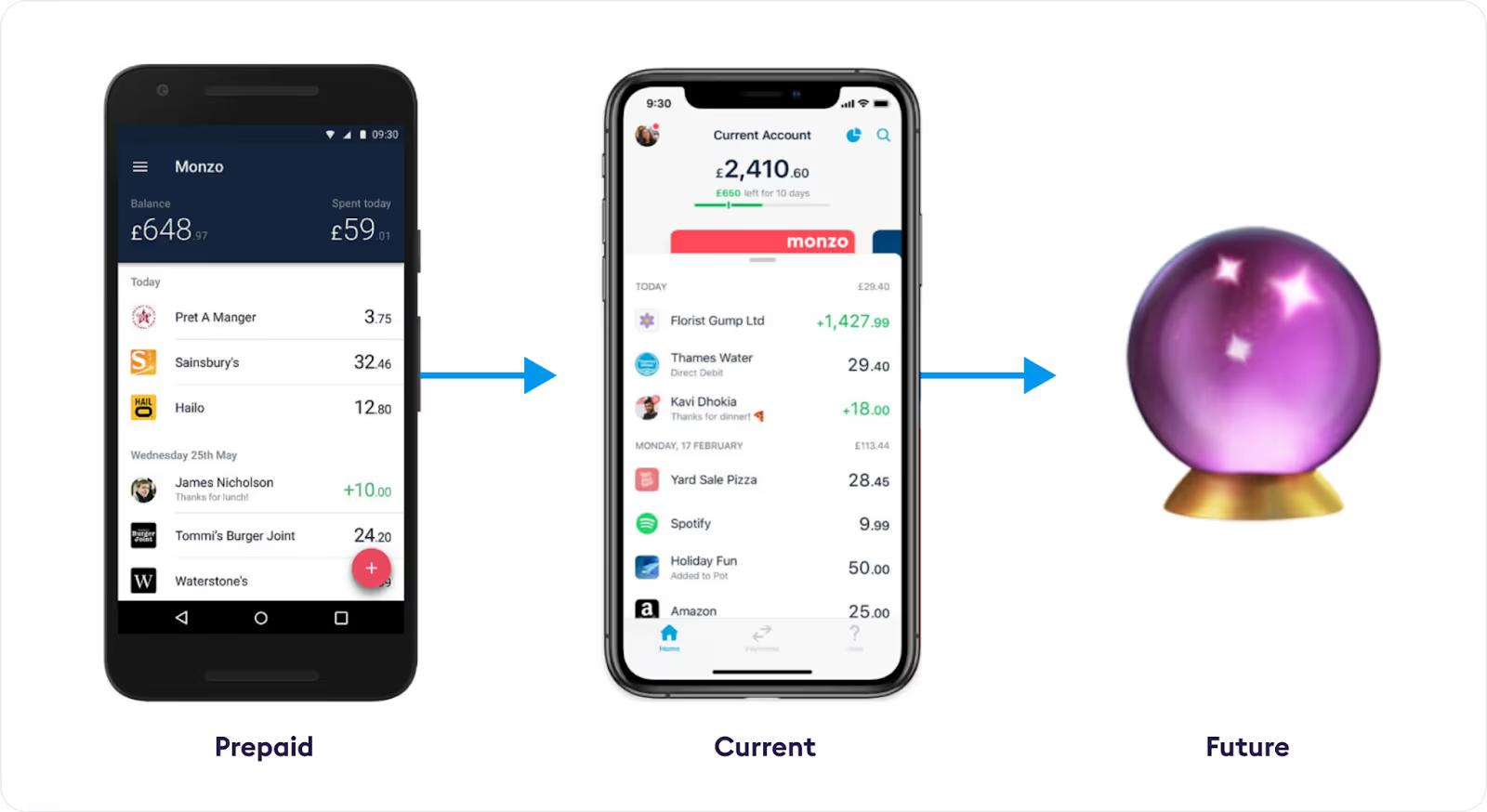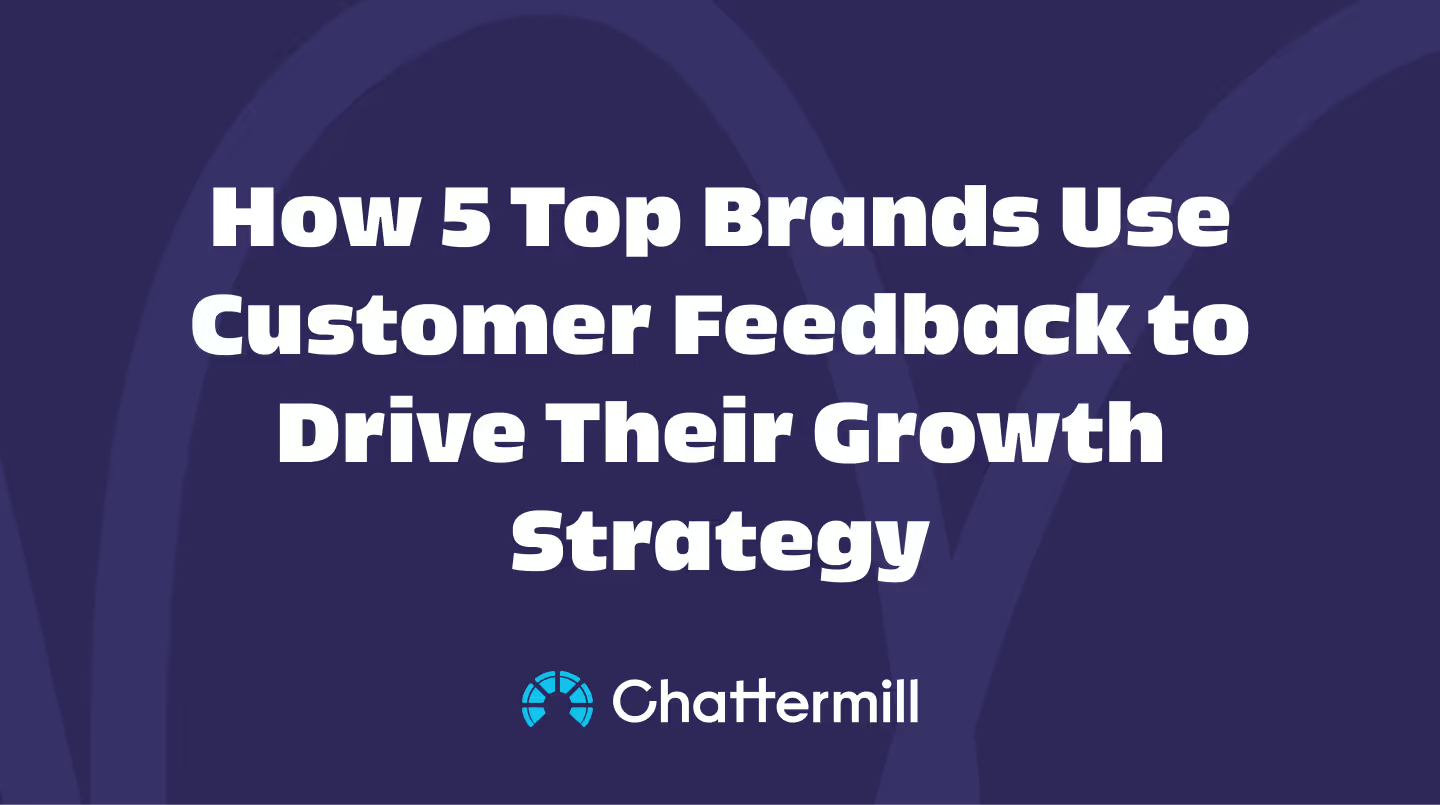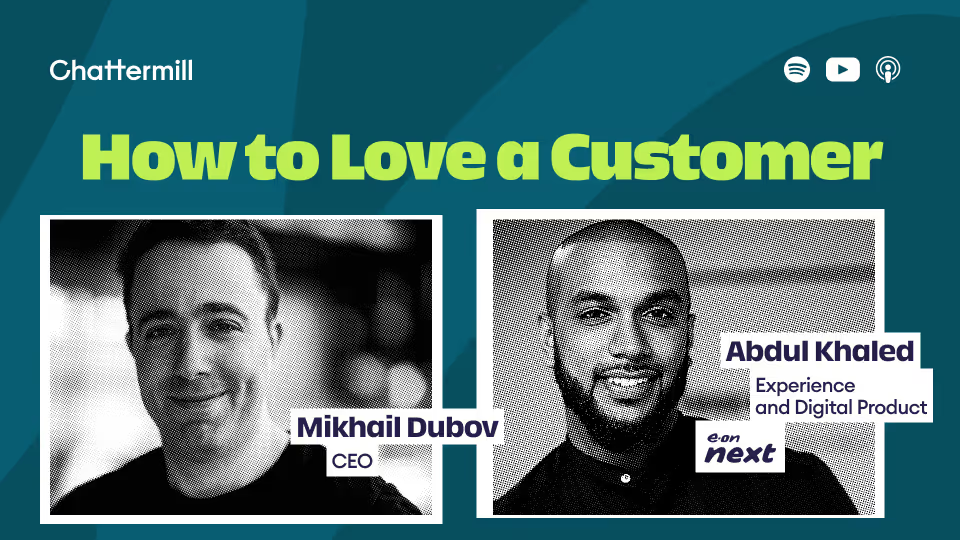In this full customer feedback breakdown, we delve into how five top brands—Lemonade, The Ritz Carlton, Monzo, Netflix, and Slack—utilize customer feedback to drive strategic growth.
As Dale Carnegie famously wrote in How to Win Friends and Influence People, “You can close more business in two months by becoming interested in other people than you can in two years by trying to get people interested in you.”
In the age of the customer, companies know that they need to understand what their customers think and feel. Understanding customers is not just useful for treating them well. It's the best way to encourage and capitalize on behavior that is beneficial to your business, for example, acquisition and retention. This means companies can focus on how customer experience impacts business outcomes and leverage multiple use cases to drive retention, acquisition, cross-sell, and word of mouth.
Let’s take a look at how 5 top brands prioritize specific use cases to drive higher profit across specific stages of the customer journey.
Lemonade Uses Customer Feedback Data to Build a Business Based on Cross-Selling Opportunities
Lemonade is a multiple product insurance company that can settle claims in just two seconds. It’s a digital native challenger in the insurance industry, using technology to gather and utilize data at such a rate that it can erode the lead of traditional insurance companies. The image below, produced by Lemonade, shows how breaking loss data down into subgroups reveals rates of churn that have huge implications for their business:

As data accumulates, patterns emerge that expose the patterns of subgroups, enabling more precise underwriting. This gives companies like Lemonade a structural advantage over their competitors because they can reduce their loss ratio using customer feedback data.
Erez Dicman, Senior Vice President of R&D at Lemonade says
“Interactions with our customers across our platform generate a trove of data, which in turn improves interactions with our customers across our platform.”
Traditional insurance firms will have even more data than digital native companies like Lemonade as they have more customers and have been around for longer. But, according to McKinsey, the customer journey is typically fragmented and the transition from online to offline channels can be abrupt or nonexistent.
How does Lemonade use all this data to make customer experience decisions?
Lemonade has used category expansion to drive incremental revenue and increased retention from cross-selling. Launching with renters insurance in 2016, it expanded to homeowners insurance and in 2020, pet insurance. The primary reason for this was that its younger customers (which make up most of its base) need new types of insurance as they meet different life stages.
Lemonade use their massive data resources to create an insurance ecosystem that empowers cross-selling. They have even created dedicated teams that focus on the crossover between different products so that departments within the brand can focus on their product-specific OKRS instead of getting distracted by cross-sales.
Customers can toggle between their pet, homeowners, life, and car policies, all through a single app. But it doesn’t end with technology - if a member of their CX team is speaking to a homeowners policyholder and hears a dog barking in the background, that data can be used to cross-sell to Lemonade Pet, with automatic bundling discounts where they’re eligible.
What’s even more interesting, is that this growth cycle is free as customers graduate from one type of insurance to another. In just 10 years, Lemonade has used this process to create a nearly 10x increase in cross sales from renters alone.

It’s no surprise then, that in 2024, Daniel Schreiber, Lemonade’s CEO said that Lemonade has plans for “several exciting technology advancements that should help with cross-selling,”
The Ritz Carlton Uses Hard Data to Drive Retention
The Ritz Carlton was one of the first brands to use customer feedback to personalize the guest journey. As a result, they’ve consistently won awards such as The Good Food Guide Awards 2024 – Exceptional Restaurants and Hotel Catey Awards 2023 – Front of House Team of the Year Award.
They created a unique database - aptly named “Mystique” - that tracks information such as guest preferences, frequency of visits, and issues that have come up for individual guests in previous stays. For example, a guest may arrive late because of a delayed flight and be offered a candle for their room by the staff to help them relax. Then, the next time that customer checks in, there will be a scented candle in their room. This ensures that every customer feels valued and cared for—close attention to customer feedback data delivers a consistent approach across locations.
How does the Ritz-Carlton Use their Customer Experience Data?
While The Ritz-Carlton collects data, it also has a clear plan for how it is used. They created certain business KPIs - around mystique, employee engagement, customer engagement, product service, and community involvement - and now use these as diagnostic metrics to report on what needs to change. They view financial outcomes as the result of these factors, not the core driver.
This continuous feedback loop provides the communication that keeps The Ritz Carlton’s service personal for every customer. By having a strategy that makes this feedback actionable by all employees, the company can establish the key success factors and measure and improve the customer experience within 90-day windows. The contribution of frontline staff is critical; every function has access to these as well as revenue measures. Crucially employees are also empowered to use their own initiative to act off the back of this intelligence.
So, what’s the value of a candle to The Ritz Carlton, then? It seems it’s lifetime loyalty and thousands of dollars of additional revenue.
Monzo Uses Customer Feedback to Improve Acquisition
After initially growing rapidly by delivering a much superior experience to the existing banks, Monzo has had its challenges with CX. The bank’s Forrester CX Index score plummeted by a significant 5.2 points between 2021 and 2022, falling from first to fourth place in the UK ranking. However, in the last few years they have been more innovative and productive, successfully building some revenue-generating products popular with customers.

So, what’s changed? Now Monzo uses product design experiments to drive CX. Within the organization, this is known as growth design - growth designers experiment to learn. This experimental approach means that they can deploy designs that are bolder, allowing them to better understand a users behaviour compared to testing with more conservative designs.
For example, Monzo wanted to understand how new customers use the app after onboarding. Their growth design team set up an experiment to simplify the signup process for new customers and worked on a specific set of actions in the app. The results were immediate; more customers completed the process. But these changes also reduced feature adoption and overdraft requests. Simplifying onboarding - although leading to increased sign-ups - led to decreased revenue in the first few days from reduced overdrafts.
How has this approach affected Monzo’s Revenue?
This approach is backed by radical transparency that helps customers understand the reality behind dips in customer experience and builds trust and loyalty. How many banks would publicly post a thread like this one, admitting their design mistake?

This year, the company has posted a profit of £15.4m, with revenues growing 2.5x and deposits growing 88%. By running these iterative experiments, Monzo has created a world-class experience and proven that CX and profits are not mutually exclusive in banking.
Monzo can take huge credit for both initially building the best customer experience in UK banking and for then pivoting to profitable growth without compromising on customer-centricity.
Netflix Uses Continuous Feedback to Drive Increased Conversions
Reed Hastings, Chairman of the Board of Directors at Netflix said, “If the Starbucks secret is a smile when you get your latte, [Netflix’s secret] is that the Web site adapts to the individual’s taste.” This makes sense when your site is responsible for driving the second most traffic in on-demand streaming, behind only YouTube.
You know that a company with access to this much data needs to be serious about customer feedback. Netflix drives experimentation from online experiments where they ask their members which of several possible experiences resonate with them. This is underpinned by rigorous analysis to make sure that decisions are data-driven and support business goals.
Perhaps the most famous example of this is Netflix’s recommendation engine, which helps prioritize customer suggestions. This works on several different levels:
- Netflix gives each user exactly what they want through a personalized content ranker that uses personal information to inform recommendations.
- It ranks top and trending content based on user information and previous activity so that recommendations are influenced by their specific interests.
- Recently viewed content is sorted on whether users want to keep watching or stopped watching because it wasn’t interesting.

But Netflix doesn’t stop there; all this data is amalgamated at a high level to drive strategic decisions on content development. Cindy Holland, VP of Content at Neflix said, “Like any other endeavor, it helps us determine if it’s a great idea, whether it could return, and if we believe in the creative team to execute the idea.”
The business uses an algorithm to help ensure that each program fits into what the audience is likely to watch, based on analyzing similar narrative touchpoints - like genre, storylines, themes, directors, or actors - from programs that have been successful in the past. By building content around these touchpoints, they can then retarget it to users who have viewed the previous content.
The most obvious example of how successful this approach is House of Cards, which brought in 3 million new subscribers in only the first 3 months. This return covered almost all of the initial $100m USD investment.
Slack Uses Customer Loyalty to Fuel Word of Mouth
Slack uses CX to drive phenomenal growth. They went from zero to a valuation of $7 billion in just five years, driven by their commitment to Product-Led Growth (PLG). Slack uses data to pinpoint exactly where to focus to improve the experience. Their CX Director Kevin Albers deep dives into the data to identify where work is needed: “When a customer has an issue, I can point the engineering team to exactly where it’s happening inside of our code base.”
Slack starts with the customer and sees growth as an outcome, not the goal. Their top challenge was to create a freemium model that would allow users to access it for free whilst also giving them a reason to upgrade to the paid version. This starts with the customer experience, specifically making sure that everything a user needs to understand and get value from Slack is part of the free version. This ensures that it’s valuable from the first seconds or minutes of a user’s first experience.
By deploying a freemium model Slack reduced the barrier to adoption and increased the audience for word-of-mouth referrals.
Then Slack deliberately set out to build a viral loop into their product. They provided users with a unique referral link so that when someone signed up for Slack both the referrer and new user received credit to upgrade to the paid version. The driver for the customer is both the incentive and the chance to collaborate with the additional person in their network - and the benefit for Slack is reducing barriers to adoption.
This strategy was underpinned by product development that supported word-of-mouth. Stewart Butterfield, former CEO of Slack described this process, “Here are the top three things we think are the most important for our customers and our business for this year, or this quarter. Within that, figure out what is the biggest leverage point for our customers.'”
Conclusion
Top brands double down on a core CX strategy, choose a specific use case (for example acquisition or retention) and experiment to optimize outcomes. This helps them to proactively invest in building a distinctive customer experience across the customer journey. By putting business outcomes first, they are able to identify how best to use their unique customer experience to gain an edge over their competitors.
If you are looking for a customer feedback analysis tool, we've put together a list of 10 things you must know before choosing a feedback analysis tool.
Customer Feedback and Growth Strategy: FAQs
How do top brands use customer feedback to grow?
Top brands actively collect customer feedback, analyze it for patterns, and use the insights to shape product improvements, marketing strategies, and customer experiences. Feedback acts as a guide to align business decisions with customer expectations.
Why is customer feedback valuable for growth strategy?
Customer feedback provides direct insights into customer needs, pain points, and desires. By acting on these insights, companies can reduce churn, increase loyalty, and create products or services that resonate more deeply with their audience.
What types of customer feedback are most useful for growth?
Both quantitative data (such as survey scores or usage metrics) and qualitative data (such as open-text feedback or reviews) are valuable. Together, they provide a holistic view of customer satisfaction and areas for improvement.
How can analyzing feedback improve product development?
Feedback highlights what customers like and dislike about a product. By spotting recurring issues or feature requests, businesses can prioritize updates that directly enhance customer experience and strengthen product-market fit.
What role does feedback play in customer experience improvement?
Feedback helps identify friction points in the customer journey. Addressing these issues creates smoother interactions, increases satisfaction, and drives repeat business—all of which fuel sustainable growth.
How do companies ensure feedback leads to action?
Successful brands create structured feedback loops where insights are shared across teams, prioritized, and turned into initiatives. Regularly closing the loop with customers also builds trust by showing their voices are valued.
Can feedback analysis influence marketing strategies?
Yes. Feedback can reveal which messages resonate, which channels perform best, and how customers perceive a brand. These insights help refine marketing campaigns to better connect with target audiences.
What tools help companies analyze customer feedback effectively?
Brands often use feedback analytics platforms, text analysis tools, and AI-powered sentiment analysis to process large volumes of data. These tools help uncover themes and actionable insights faster than manual review.
















